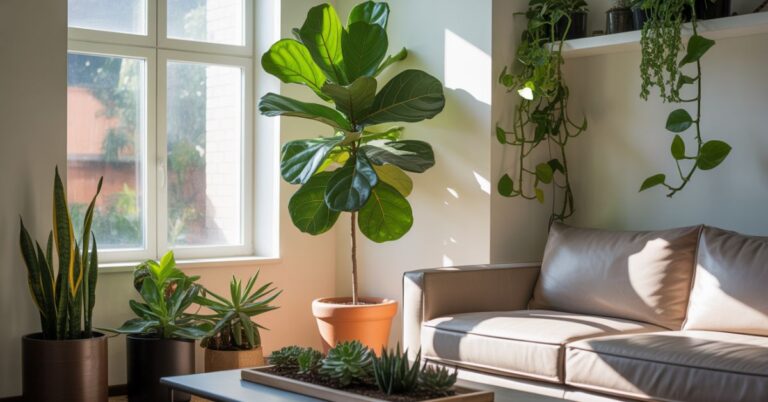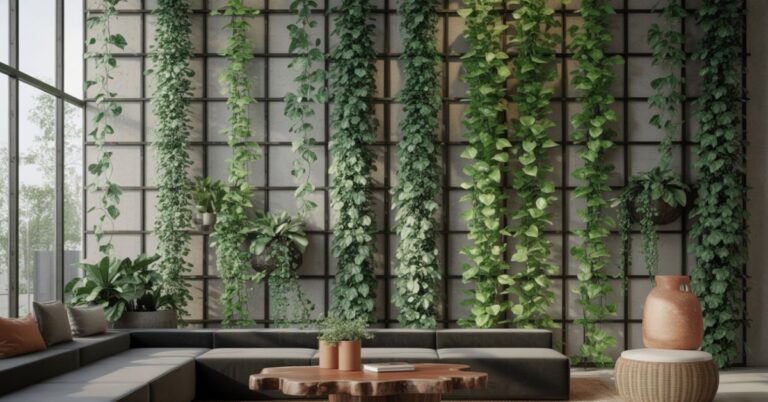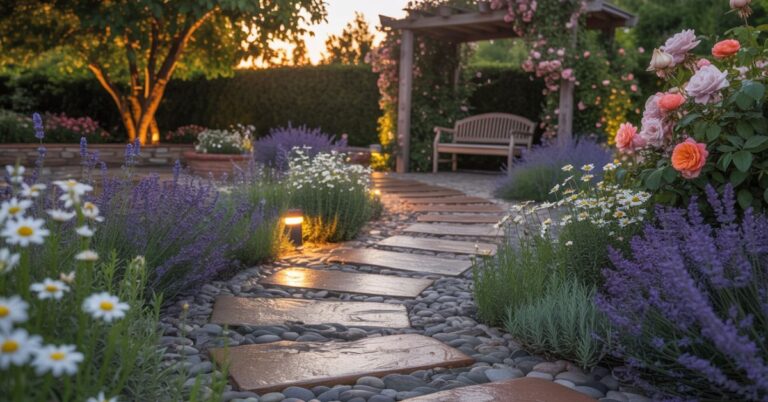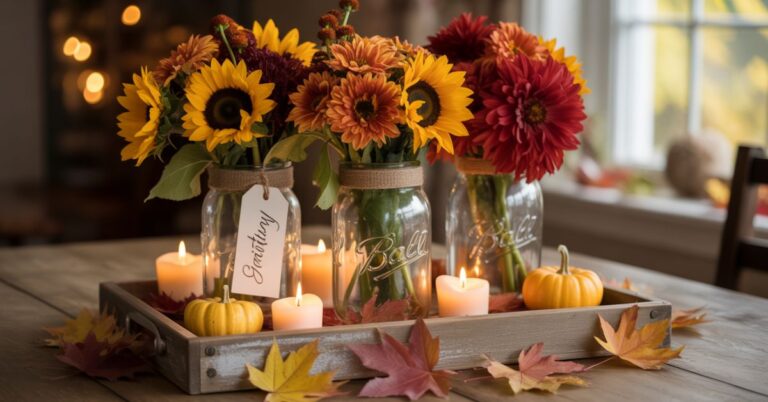25+ Outdoor Patio Ideas for You Backyards Space
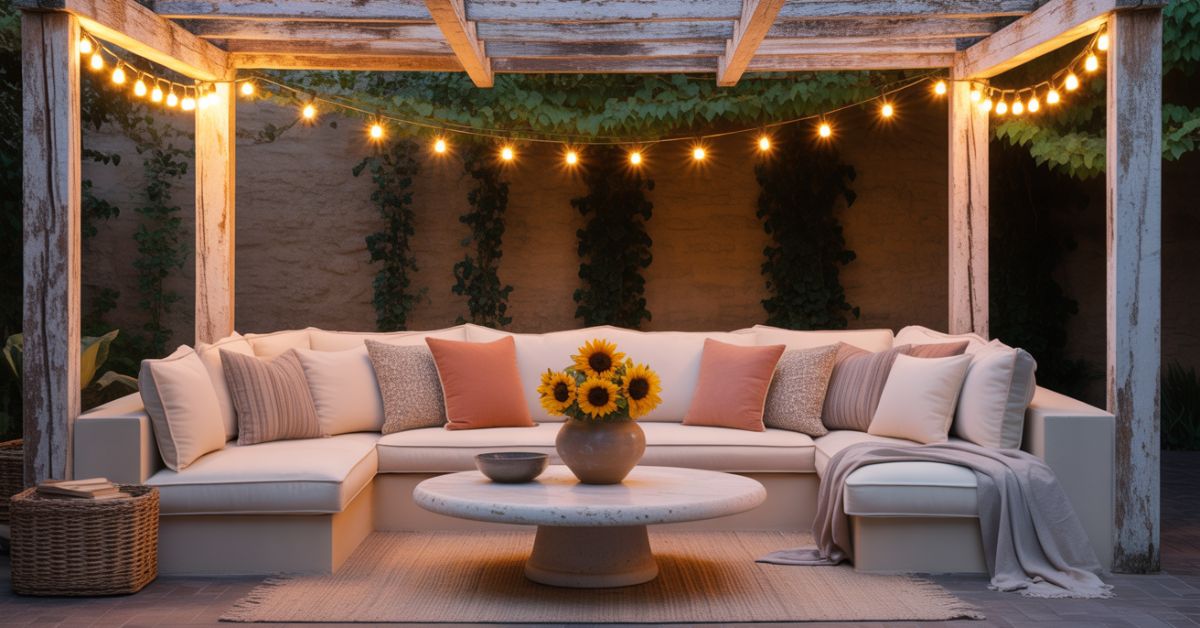
Your backyard patio sits there gathering dust while you dream of hosting summer barbecues and relaxing evenings under the stars. That neglected slab of concrete or overgrown patch of grass represents untapped potential. Every day without a functional outdoor living space means missed opportunities for family gatherings, quiet morning coffees, and boosting your home’s value. The good news?
Transforming your backyard with creative outdoor patio ideas doesn’t require a massive budget or professional help. Whether you’re working with a sprawling lawn or a compact urban yard, the right patio design can turn your property into an inviting extension of your home that you’ll actually use.
Why Backyard Patios Matter for Modern Homes
Outdoor patio ideas for backyards have evolved from simple concrete slabs to sophisticated living areas that rival indoor spaces. Homeowners now view their yards as prime real estate for relaxation and entertainment.
A well-designed backyard patio increases your property value by 12-20% according to real estate experts. Buyers consistently rank outdoor living areas among their top desired features. Beyond financial returns, these spaces provide mental health benefits through increased exposure to nature and fresh air. Your patio becomes a sanctuary where stress melts away after long workdays.
Small backyards benefit enormously from strategic patio planning. Limited square footage forces creative thinking that often produces more interesting designs than sprawling estates. You can create intimate conversation areas, vertical gardens, and multi-functional zones that make every inch count. The key lies in understanding your space’s potential rather than its limitations.
How to Choose the Perfect Patio Layout for Your Backyard
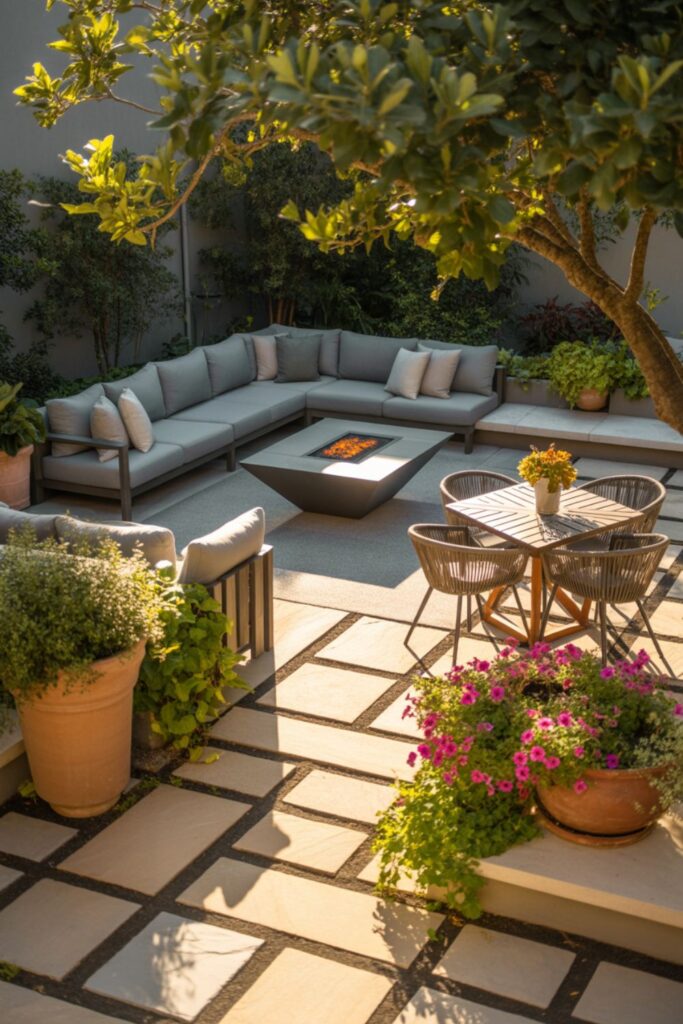
Patio layouts depend on your yard’s shape, sun exposure, and intended use. Start by observing how sunlight moves across your property throughout the day.
Morning sun lovers should position their outdoor living space on the east side where breakfast coffee tastes better with gentle sunrise warmth. Evening entertainers need western exposure for sunset views during dinner parties. North-facing patios offer consistent shade perfect for hot climates, while south-facing options maximize sunlight in cooler regions.
Traffic flow matters tremendously for backyard patio designs. Your patio should connect naturally to your home’s main entry points. French doors or sliding glass walls create seamless indoor-outdoor transitions. Avoid placing your patio too far from the kitchen if you plan frequent outdoor dining. Walking 50 feet with hot plates gets old quickly.
Consider sight lines from inside your home. Your patio should look appealing from living room windows even when you’re not using it. Position furniture and landscaping elements to create focal points visible from multiple angles. This approach makes your entire property feel more cohesive and intentionally designed.
Read More About: 52+ Outdoor Patio Ideas for Small Spaces
What Are the Best Materials for Outdoor Patios?
Materials selection impacts your patio’s appearance, durability, and maintenance requirements. Each option brings distinct advantages and challenges worth understanding before committing.
Concrete pavers dominate budget-friendly projects because they’re affordable and easy to install. These versatile blocks come in countless colors, shapes, and textures that mimic natural stone. Homeowners can complete DIY projects over weekends using basic tools. Pavers drain well and individual pieces can be replaced if damaged without redoing the entire surface.
Natural stone like flagstone, bluestone, or slate creates timeless elegance that ages beautifully. These materials cost more upfront but last generations with minimal care. Each piece displays unique patterns and colors that synthetic options can’t replicate. Stone stays cooler underfoot during summer compared to concrete or composite decking.
Stamped concrete offers custom patterns and colors at mid-range prices. Contractors pour and texture the surface to resemble brick, stone, or tile. This option works exceptionally well for larger patios where material costs would otherwise skyrocket. The main drawback involves potential cracking in freeze-thaw climates without proper installation.
Gravel patios provide excellent drainage and rustic charm for small backyards. Crushed stone or pea gravel costs pennies per square foot and drains instantly after rain. Add pavers or stepping stones for stable furniture placement. This budget-friendly approach suits casual cottage-style properties where formal aesthetics aren’t priorities.
Outdoor Patio Ideas for Small Backyards
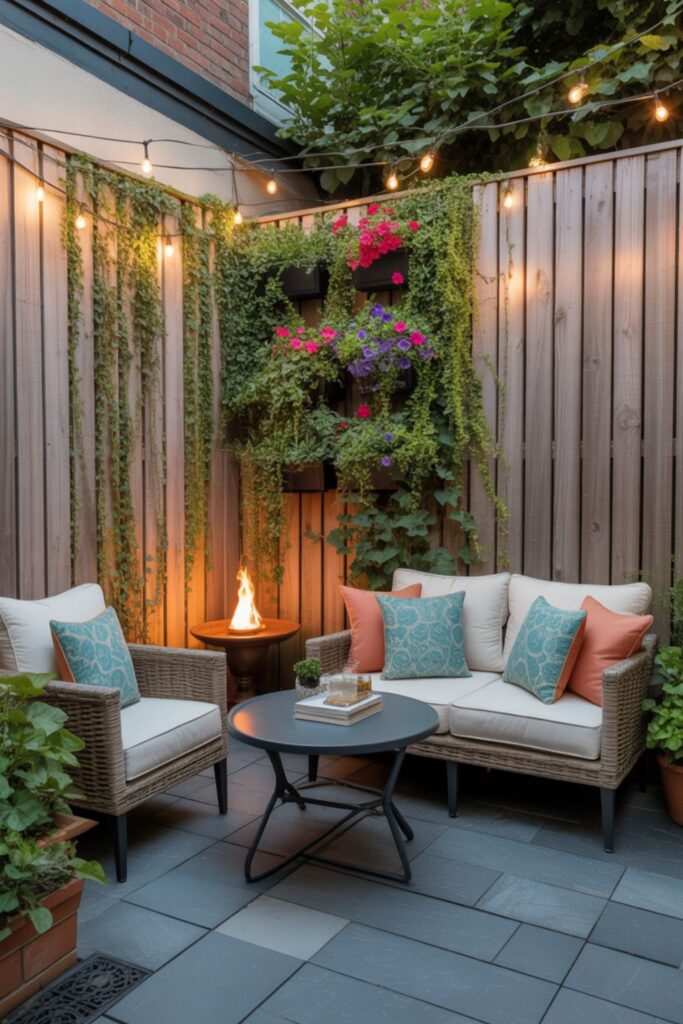
Small backyards demand smart space planning that prioritizes functionality over sprawling designs. Compact outdoor patio ideas prove that square footage doesn’t limit style or comfort.
Vertical elements maximize usable area without consuming precious ground space. Wall-mounted planters, trellises with climbing vines, and hanging gardens add greenery that would otherwise require large pots. Install fold-down tables or Murphy-style bars that disappear when not needed. These transformable features let your patio serve multiple purposes throughout the day.
Built-in seating with hidden storage underneath solves two problems simultaneously. Benches along patio perimeters provide ample seating while storing cushions, gardening tools, or outdoor toys. This approach eliminates bulky furniture that overwhelms tight quarters. Add colorful throw pillows to inject personality without permanent commitment.
Lighting creates illusions of spaciousness after dark. String lights overhead draw eyes upward, making ceilings feel higher. LED strips under built-in benches or planters add ambient glow that expands perceived boundaries. Mirrors strategically placed on fences reflect light and greenery, effectively doubling visual square footage.
Corner fire pit patios anchor small backyards with cozy focal points. Compact propane or gel fuel models provide warmth and ambiance without sprawling wood-burning structures. Arrange seating in conversation circles that encourage intimacy rather than trying to accommodate crowds. Sometimes less truly means more.
How Can You Add Privacy to Your Backyard Patio?
Privacy transforms open backyards into secluded retreats where you can relax without feeling exposed to neighbors. Strategic screening creates intimate atmospheres worth the extra planning.
Living walls using fast-growing plants like bamboo, arborvitae, or Italian cypress provide natural barriers that improve over time. These green screens absorb noise, filter air, and attract beneficial wildlife. Evergreen varieties maintain privacy year-round unlike deciduous options that lose leaves. Plant in staggered rows for fuller coverage faster.
Lattice panels or decorative screens offer instant solutions for outdoor living spaces needing immediate seclusion. Attach these to existing fences or install as freestanding partitions. Paint them bold colors for modern aesthetics or leave natural wood for rustic charm. Weave climbing roses or jasmine through openings for living artwork that smells amazing.
Pergola designs with fabric curtains or retractable shades create flexible privacy that adjusts to your needs. Draw panels closed for intimate dinners or tie them back when hosting larger gatherings. Outdoor-rated fabrics withstand weather while adding softness that hardscaping alone can’t achieve.
Water features like fountains or small waterfalls mask unwanted noise from nearby streets or chatty neighbors. The pleasant babbling provides acoustic privacy that solid barriers miss. Position water elements near seating areas for maximum sound-blocking effectiveness.
What Lighting Options Work Best for Backyard Patios?
Lighting extends your patio’s usability long after sunset while establishing mood and safety. Layered illumination approaches work better than single overhead fixtures.
Ambient overhead lighting from chandeliers or pendant lights creates welcoming glows for entertainment areas. Solar-powered or low-voltage LED options reduce energy costs dramatically. Install dimmer switches to adjust brightness based on activities. Bright light works for meal prep while softer levels suit after-dinner conversations.
Task lighting focuses on specific zones like grilling stations, outdoor kitchens, or reading nooks. Adjustable wall sconces let you direct beams exactly where needed. Under-counter LED strips illuminate workspace counters without harsh glare. These functional lights make cooking outdoors safer and more enjoyable.
Accent lighting highlights architectural features, specimen plants, or water elements. Up lights positioned at tree bases create dramatic shadows on fences or home exteriors. Path lights embedded in paver joints guide foot traffic safely without cluttering surfaces. Color-changing RGB bulbs add festive atmospheres for parties.
String lights remain wildly popular for backyard patio designs because they combine function with whimsy. Edison bulbs provide vintage charm while mini LEDs disappear during daytime. Drape them overhead in zigzag patterns or wrap posts and pergola beams. The warm glow makes everything look more inviting without expensive installations.
How to Create the Perfect Fire Pit Patio Area
Fire pit patios serve as magnetic gathering spots that extend seasonal use deep into fall and early spring. The dancing flames create primal appeal that no other feature replicates.
Central placement works best for fire pit designs intended for conversation. Arrange seating in complete circles rather than semicircles to encourage interaction among all guests. Maintain 3-4 feet between seating and fire rings for safety and comfort. Too close feels overwhelming while too far loses warmth benefits.
Built-in fire pits using stone or brick integrate seamlessly into hardscaping schemes. These permanent fixtures anchor patio layouts and typically include surrounding ledges for resting drinks or roasting sticks. Professional installation ensures proper gas lines or ventilation for wood-burning models. The investment pays off in durability and safety compliance.
Portable fire pit options suit renters or homeowners wanting flexibility. Cast iron, copper, or steel bowls move easily for furniture rearrangements or seasonal storage. These budget-friendly choices still provide substantial warmth and ambiance. Add fire glass or lava rocks for polished appearances that hide ash between cleanings.
Safety considerations include checking local regulations before installing any fire pit. Many municipalities restrict wood burning due to air quality concerns. Keep fire extinguishers or garden hoses nearby. Use fireproof mats under portable units to protect surfaces from heat damage or stray embers.
What Outdoor Furniture Complements Different Patio Styles?
Patio furniture ideas should match your overall design aesthetic while providing comfort for actual use. Mixing materials and styles creates more interesting spaces than matchy-matchy sets.
Modern outdoor living spaces favor clean lines with materials like powder-coated aluminum, teak, or synthetic wicker. Low-profile sectionals in neutral colors let architectural elements shine. Add pops of color through accent pillows that you can swap seasonally. Glass-top tables keep sight lines open in small backyards.
Rustic or farmhouse patio designs embrace natural wood finishes, Adirondack chairs, and distressed metals. Reclaimed barn wood tables paired with mismatched seating create curated casualness. Mason jar lights and galvanized metal planters complete the look. These forgiving styles hide wear beautifully as pieces develop character over time.
Mediterranean backyard patio themes incorporate wrought iron furniture with mosaic tile accents. Terra cotta pots overflowing with herbs and lavender add authentic touches. Curved archways and stucco finishes on walls enhance the European villa vibe. Bold cobalt blues and sunny yellows inject energy appropriate for entertaining.
Budget-friendly furniture options include shopping estate sales, refinishing hand-me-downs, or building custom pieces from pallets. Quality outdoor fabrics let you reupholster tired cushions for fresh looks. Concrete cinder blocks stacked and topped with wood planks create industrial-chic benches costing under $50.
How Can You Incorporate Shade into Your Patio Design?
Shade structures make outdoor patio ideas for backyards usable during peak summer heat when unprotected spaces become unbearable. Strategic coverage extends comfortable hours dramatically.
Pergolas top the popularity charts for backyard patio designs needing architectural interest and partial shade. These open-roof structures support climbing plants that fill in over seasons. Add retractable canopies for adjustable coverage as sun angles change. Modern aluminum pergolas include motorized louvers that rotate for complete sun blocking or star gazing.
Shade sails offer contemporary alternatives that cost less than permanent structures. These tensioned fabric triangles or squares attach to posts or building sides. UV-resistant materials block 90-95% of harmful rays while allowing breezes through. Multiple sails at varying heights create dynamic visual interest.
Cantilever umbrellas provide flexible shade that moves with your seating arrangements. The offset design eliminates center poles that clutter tables. Heavy bases prevent tipping during wind gusts. Close umbrellas during storms to prevent damage. Quality models last 5-7 years with proper maintenance.
Living shade from strategically planted trees delivers long-term solutions. Deciduous varieties like maples or oaks provide summer coverage while allowing winter sun after leaves drop. Position trees considering mature canopy spreads to avoid overwhelming your patio eventually. Fast-growing options like river birch establish shade within 5-7 years.
What Are the Best Plants for Backyard Patios?
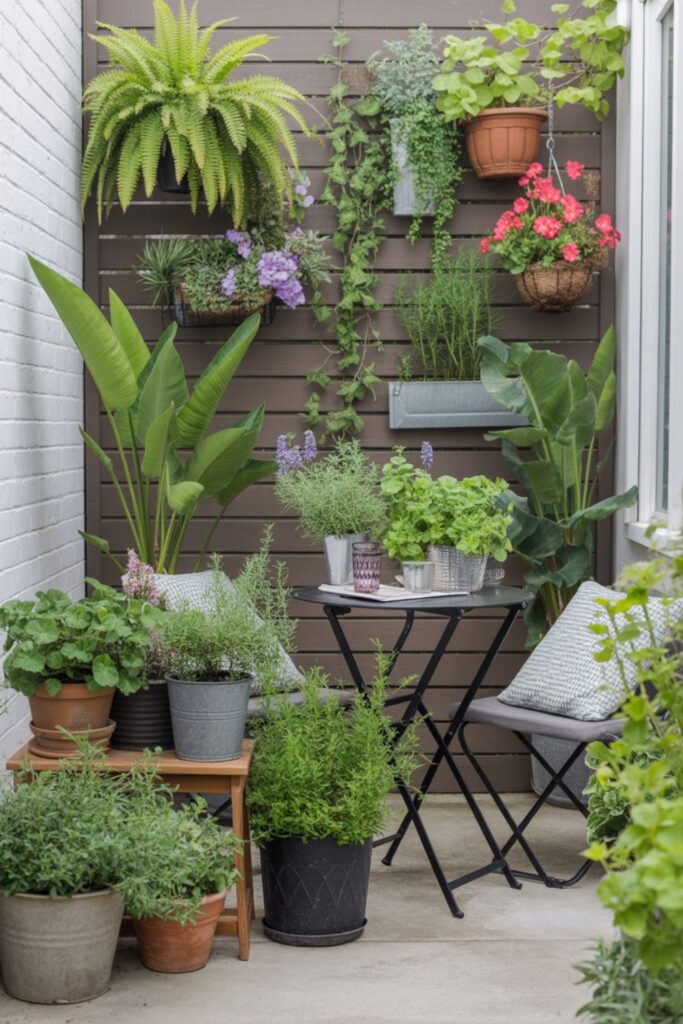
Landscaping around and within your patio softens hard surfaces while connecting your outdoor living space to the broader yard. Plant selections should match your climate, sunlight, and maintenance willingness.
Container gardens offer maximum flexibility for small backyards or rental properties. Citrus trees, Japanese maples, or ornamental grasses in large pots create focal points you can rearrange. Mix heights and textures for visual interest. Group containers in odd numbers for professional-looking arrangements.
Perimeter planting beds frame patio edges with color and fragrance. Low-maintenance options like daylilies, salvia, or Russian sage thrive with minimal fussing. Choose plants with staggered bloom times for continuous color spring through fall. Evergreen shrubs like boxwood or holly provide year-round structure.
Edible gardens integrate beautifully into outdoor patio ideas for homeowners who enjoy fresh ingredients. Raised beds along patio edges grow lettuce, herbs, tomatoes, and peppers within arm’s reach of outdoor kitchens. Kids love picking cherry tomatoes during parties. These productive gardens justify their space while looking attractive.
Vertical gardens maximize planting areas without sacrificing floor space. Wall-mounted pockets or stacked planters grow herbs, succulents, or trailing flowers. These living artworks add dimension to flat fences or blank walls. Drip irrigation systems simplify watering, making maintenance manageable even for busy households.
How Much Does It Cost to Build a Backyard Patio?
Budget-friendly approaches to outdoor patio ideas for backyards range from simple DIY projects costing hundreds to elaborate professional installations exceeding $20,000. Understanding cost factors helps set realistic expectations.
Basic gravel or crushed stone patios cost $2-5 per square foot for materials alone. Homeowners comfortable with site prep and compacting can complete 200-square-foot patios for under $1,000. Add pavers or stepping stones for $500-800 more. These budget-friendly options still create functional outdoor living spaces.
Concrete paver patios average $10-15 per square foot installed. A typical 300-square-foot patio runs $3,000-4,500 including excavation, base preparation, and materials. DIY projects cut costs by 40-50% if you rent equipment and invest sweat equity. Premium pavers or intricate patterns increase prices.
Natural stone patios command $15-30 per square foot depending on stone type and regional availability. Flagstone, bluestone, and slate fall at different price points. Add professional installation fees of $10-15 per square foot for proper leveling and jointing. A 400-square-foot stone patio might cost $10,000-18,000 complete.
Pergolas, fire pits, lighting, and furniture add substantially to base patio costs. Simple pergola kits start around $1,500 while custom designs exceed $8,000. Prefab fire pits cost $200-800 versus $2,000-5,000 for built-in models. Budget 20-30% of patio construction costs for furnishings and accessories.
Can You Build a Patio Yourself or Should You Hire Professionals?
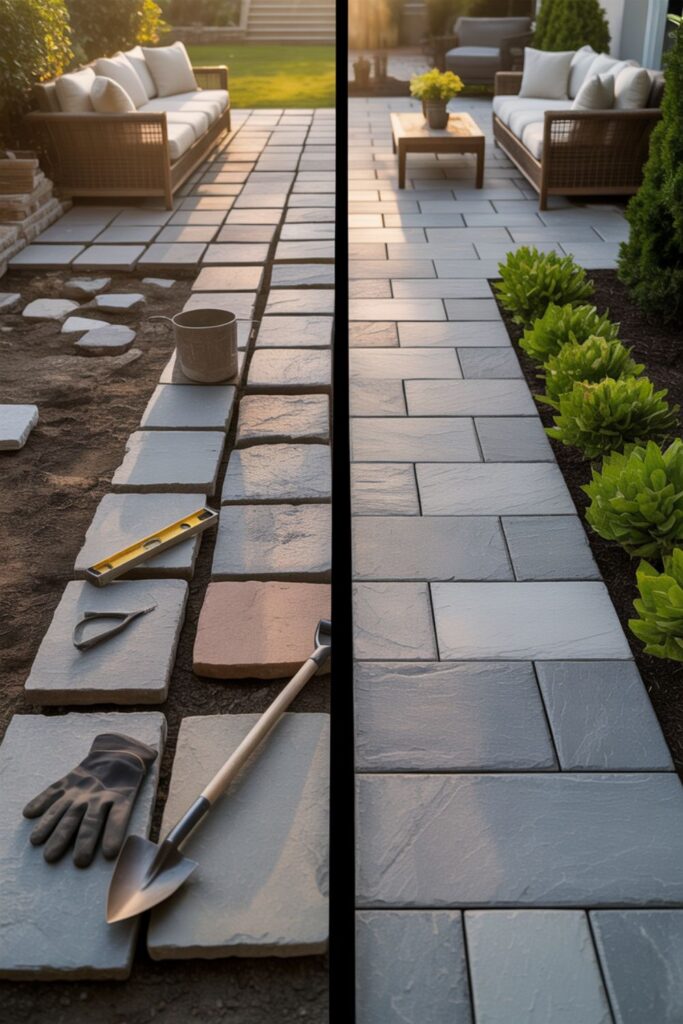
DIY projects suit handy homeowners willing to research techniques and invest time. Certain outdoor patio ideas work better as professional jobs depending on complexity.
Simple paver or gravel patios make excellent DIY projects for beginners. Online tutorials cover every step from site layout to final compacting. Rent plate compactors and wet saws from equipment rental centers. Two people can complete 200-square-foot patios over long weekends. The physical labor proves demanding but manageable.
Professional installation makes sense for projects involving concrete pouring, gas line connections, or structural pergola construction. Contractors carry liability insurance protecting you from injury or property damage claims. Their experience prevents costly mistakes like improper drainage causing water pooling.
Hybrid approaches split work between homeowners and professionals. You might handle demolition and site clearing while hiring contractors for technical aspects. This strategy saves money while ensuring quality results for challenging components. Communicate expectations clearly and get written estimates before starting.
Permitting requirements vary by location and project scope. Simple ground-level patios rarely need permits while attached structures or electrical work typically require inspections. Check with local building departments before starting to avoid violations that complicate future home sales.
Read More: 37+ Pergola Ideas Transform Your Outdoor Space
How to Maintain Your Outdoor Patio Throughout the Year
Regular maintenance preserves your patio’s appearance and extends its lifespan significantly. Seasonal use considerations prevent damage during harsh weather.
Spring cleaning involves power washing to remove winter grime, mildew, and debris. Use appropriate pressure settings for your surface materials to avoid etching or damage. Reseal pavers or natural stone every 2-3 years to maintain water resistance and color vibrancy. Replace damaged pavers before problems spread.
Summer maintenance focuses on keeping furniture and fabrics clean and protected. Hose down cushions monthly and spot-clean spills immediately. Store delicate pieces during extended absences or severe storms. Trim overhanging branches that drop leaves or sap onto surfaces.
Fall preparation includes clearing gutters to prevent overflow onto patios during winter rains. Store or cover furniture if you won’t use it during cold months. Drain water features and fire pit components to prevent freeze damage. Apply fresh sealant to wood elements before the weather turns harsh.
Winter protection in cold climates means removing snow promptly to prevent ice damaging. Avoid metal shovels that scratch surfaces; use plastic models or brooms. Don’t use rock salt or harsh deicers on natural stone or decorative concrete as chemicals cause pitting. Sand provides traction without chemical damage.
What Are the Latest Trends in Backyard Patio Design?
Current outdoor patio ideas for backyards emphasize outdoor rooms that function like interior spaces. Homeowners increasingly invest in weatherproof comfort and technology integration.
Outdoor kitchens have evolved beyond simple grills to complete cooking suites. Built-in refrigerators, pizza ovens, and kegerators let you prepare entire meals outside. Weatherproof cabinetry stores dishes and utensils. These entertainment areas become party centerpieces that reduce indoor traffic during gatherings.
Smart lighting and audio systems controlled via phone apps add convenience. Program lighting scenes for different occasions with single button presses. Weatherproof speakers hidden in landscaping provide ambient music without visible wires. Some systems include outdoor heaters and fans on the same control network.
Biophilic design principles incorporate natural elements throughout patio designs. Living walls, water features, and abundant plantings create calming environments that reduce stress. Natural materials like stone and wood dominate over synthetic alternatives. The trend emphasizes sustainability and connection to nature.
Multi-functional spaces maximize utility in small backyards. Convertible furniture transforms dining tables into work desks or bars. Fire tables serve as coffee tables during the daytime. Retractable screens create rooms within patios for different activities. Flexibility accommodates changing needs without renovations.
Frequently Asked Questions
How much does a typical backyard patio cost?
Backyard patio costs range from $1,000 for basic gravel installations to $20,000+ for elaborate stone patios with built-in features. Average concrete paver patios run $3,000-5,000 for 300 square feet including professional installation. DIY projects cost 40-50% less if you provide labor yourself.
What is the best low-maintenance patio material?
Composite decking and porcelain pavers require minimal maintenance beyond occasional washing. Concrete pavers also rank highly for durability with simple cleaning needs. Natural stone requires periodic sealing but otherwise lasts decades. Gravel needs occasional replenishing but drains perfectly and costs very little.
Can I build a patio directly on grass?
Building directly on grass causes settling and weed growth through patio surfaces. Proper DIY projects require removing 6-8 inches of soil, adding gravel base, and compacting thoroughly. This prevents shifting and drainage problems. Skipping preparation leads to expensive repairs within 2-3 years.
How do I choose between a patio and a deck?
Patios cost less, require less maintenance, and work better at ground level. Decks suit sloped yards or second-story access. Outdoor patio ideas offer more material choices while decks provide built-in railings for elevated spaces. Consider your yard’s topography and budget when deciding.
What size should my backyard patio be?
Minimum functional patio sizes start at 12×12 feet for small backyards with bistro seating. Comfortable dining patios need 12×16 feet minimum. Entertainment areas work best at 16×20 feet or larger. Add 30-40 square feet per person you regularly host. Larger always feels better than cramped.
How can I make my small patio look bigger?
Use light-colored materials and extend patio edges into lawn areas with steppers. Vertical gardens draw eyes upward while mirrors create depth illusions. Minimal furniture placement and continuous color schemes prevent visual clutter. Strategic lighting after dark expands perceived boundaries significantly in small backyards.
Conclusion
Transforming your property with thoughtful outdoor patio ideas for backyards creates valuable living space that enhances daily life and property values. Whether you choose budget-friendly DIY projects or invest in professional installation, the key lies in designing spaces that match your lifestyle and maintenance capacity. Start with proper planning that considers sun exposure, privacy, and traffic flow. Select materials appropriate for your climate and aesthetic preferences while incorporating lighting, comfortable furniture, and strategic landscaping that make your patio genuinely inviting.
The best backyard patio designs balance functionality with beauty while staying true to your budget. Begin with essential elements like solid foundations and basic seating, then add features like fire pits, pergolas, or outdoor kitchens as resources allow. Your outdoor living space should evolve with your needs rather than requiring perfection immediately. Take action today by measuring your available space, researching materials that appeal to you, and sketching rough layouts. Every great patio started as an idea that someone decided to pursue, and yours deserves the same commitment to creating outdoor memories that last lifetimes.

